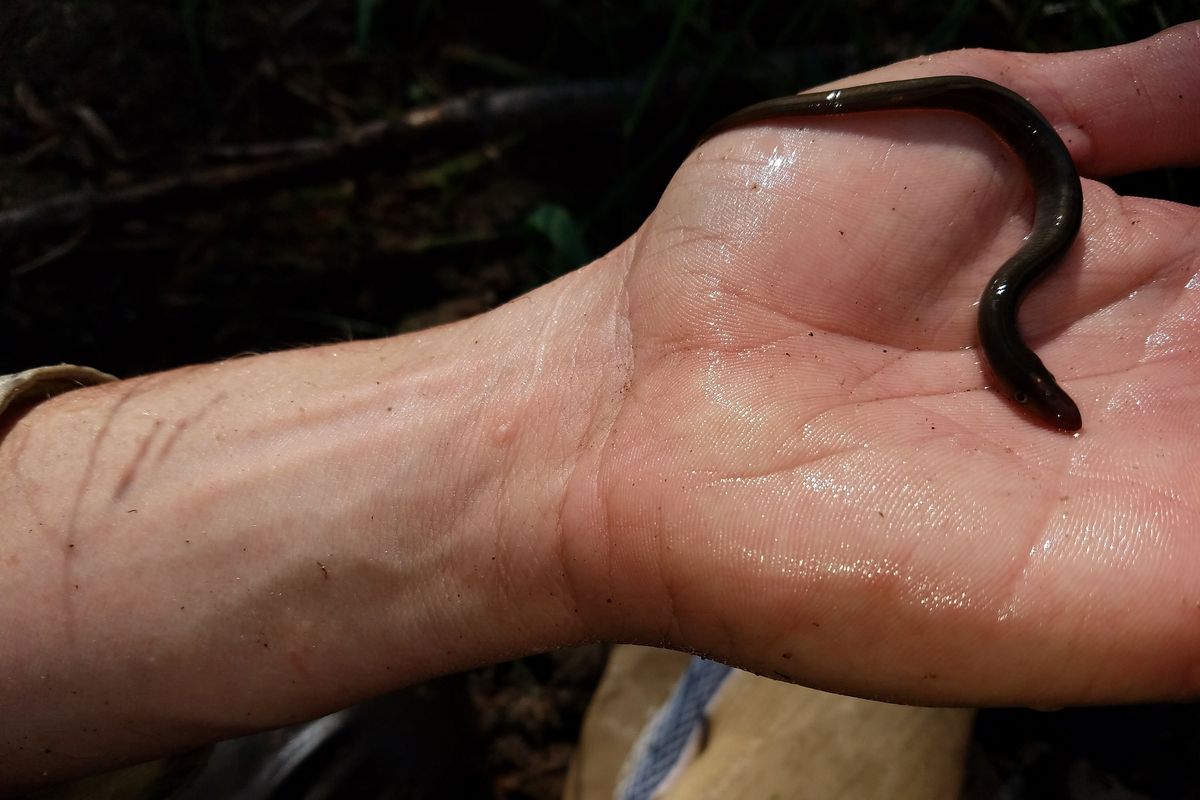In a small Cascade Mountains lake in Oregon, the world’s smallest lamprey is making a comeback

CHEMULT, ORE. – Using hook and line to ply the waters of Miller Lake all summer, Jordan Ortega caught brown trout with an unlikely purpose in mind, and it panned out in spades.
Ortega would inspect the bellies of these browns and, sure enough, find little round wounds on six of them – evidence an ichthyological wrong of 65 years ago had finally been rectified.
The trout showed clear evidence they’d been preyed upon by Miller Lake lamprey, the smallest landlocked parasite in the world whose chemical extirpation in the 1950s has been cited in biology classes worldwide as precisely how not to treat a critter.
Ortega, an Oregon State University student who helped reintroduce these critters to their namesake lake, caught six brown trout last summer with telltale wounds from these 6-inch lampreys, painstakingly reintroduced here over the past dozen years.
“To have something like this work blows me away,” says Ben Clemens, Oregon Department of Fish and Wildlife’s lamprey biologist working on the reintroduction. “I didn’t anticipate something like this would happen so soon.”
Now, this often vilified parasite once seemingly killed off before it was properly identified, is a slithering, blood-sucking testimony to why balanced, natural ecosystems can be valued over the stocked fantasy lakes of Oregon’s trout-centric past.
“Definitely, definitely,” Clemens says. “It’s a victory for all of Oregon. The more species we have in an ecosystem that should be there makes the ecosystem more healthy.”
And that is a massive about-face from past attitudes for all things without adipose fins.
State fisheries managers two generations ago did their best to rid Miller Lake of its tiny lamprey without even bothering to learn what the slimy creatures really were.
These lampreys live their first five years in the mud before emerging as adults, which then find a host fish into which they burrow their heads and feed on for a year in true “Evil Dead” fashion that would make Bruce Campbell envious. Then they fall off, breed and die.
In 1958, ODFW’s predecessor, called the Oregon Fish Commission, chemically treated Miller Lake to rid it of tui chub and lampreys deemed threats to native and stocked rainbow trout populations preferred by anglers.
The lampreys mistakenly were believed to be common Pacific lampreys cut off from the sea by Mount Mazama’s lava, a myth not dispelled until the 1960s.
Dr. Carl Bond at Oregon State University examined some dead and preserved Miller Lake lampreys only to discover they were a unique species and not the Pacific variety, as earlier believed.
These lamprey then became known internationally as the species extirpated before it was recognized.
But that narrative transformed into a road to redemption in 1992 when OSU researchers found two small lampreys in the upper Williamson River. Four years later, Forest Service teams found them in lower Miller Creek, which flows out of Miller Lake.
ODFW came up with a management plan for their former foe. The agency in 2005 removed part of a dam once meant to block lampreys, hoping the eel-like creatures could then swim up and repopulate the lake.
But fast rapids likely blocked their upstream migration, Clemens says. That led to a new plan in 2010 to electroshock lamprey from the creek, carry them to upstream lake tributaries and release them.
Ortega’s catches now show direct evidence of young lampreys alive and well, sucking on the blood of brown trout.
And they can finally wash the lamprey blood off the hands of an agency that has learned to value native species, even if they’re not valued by their angling constituency.
“It’s easy to vilify lamprey for how they look,” Clemens says. “You just don’t see these things everyday as a positive story.”